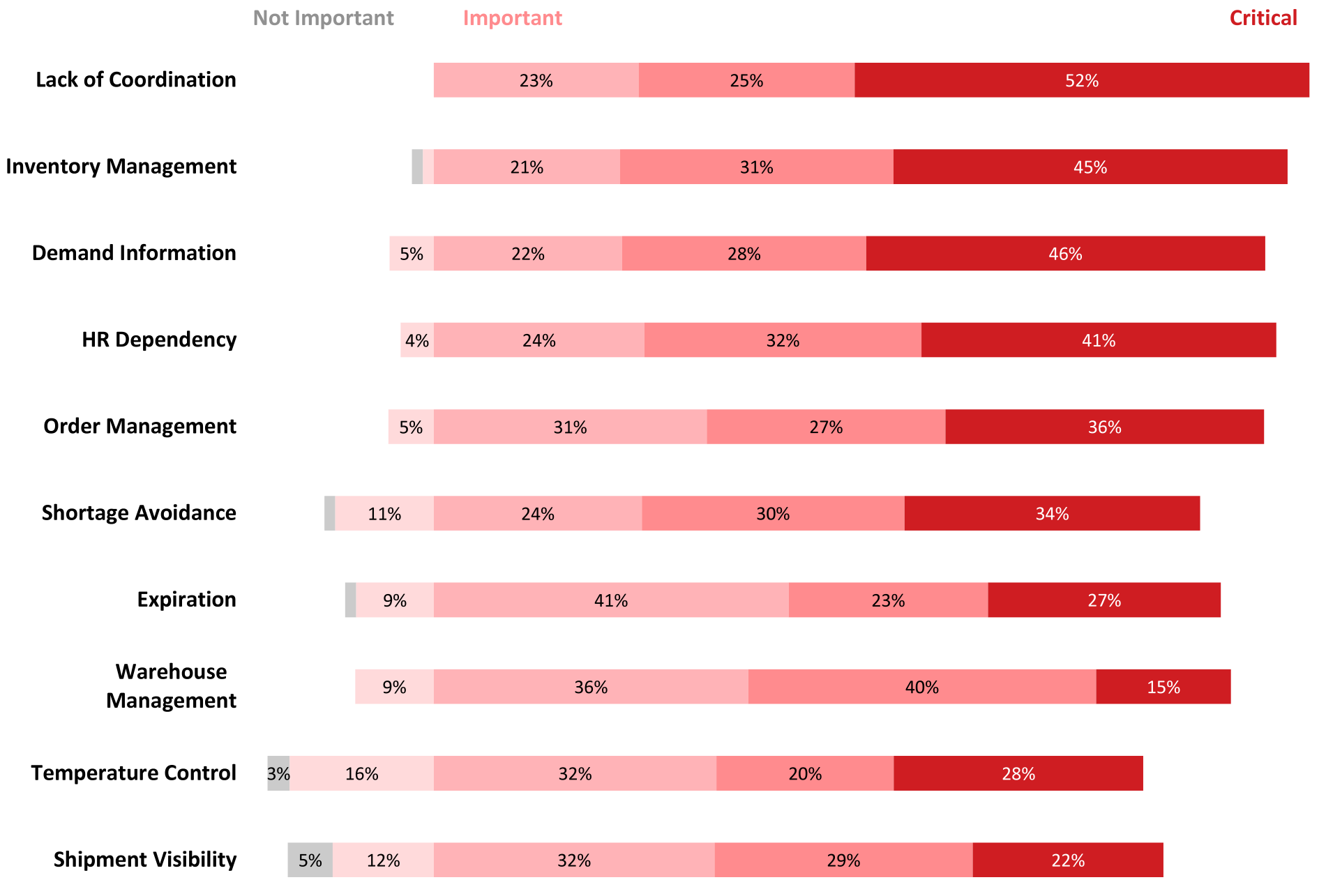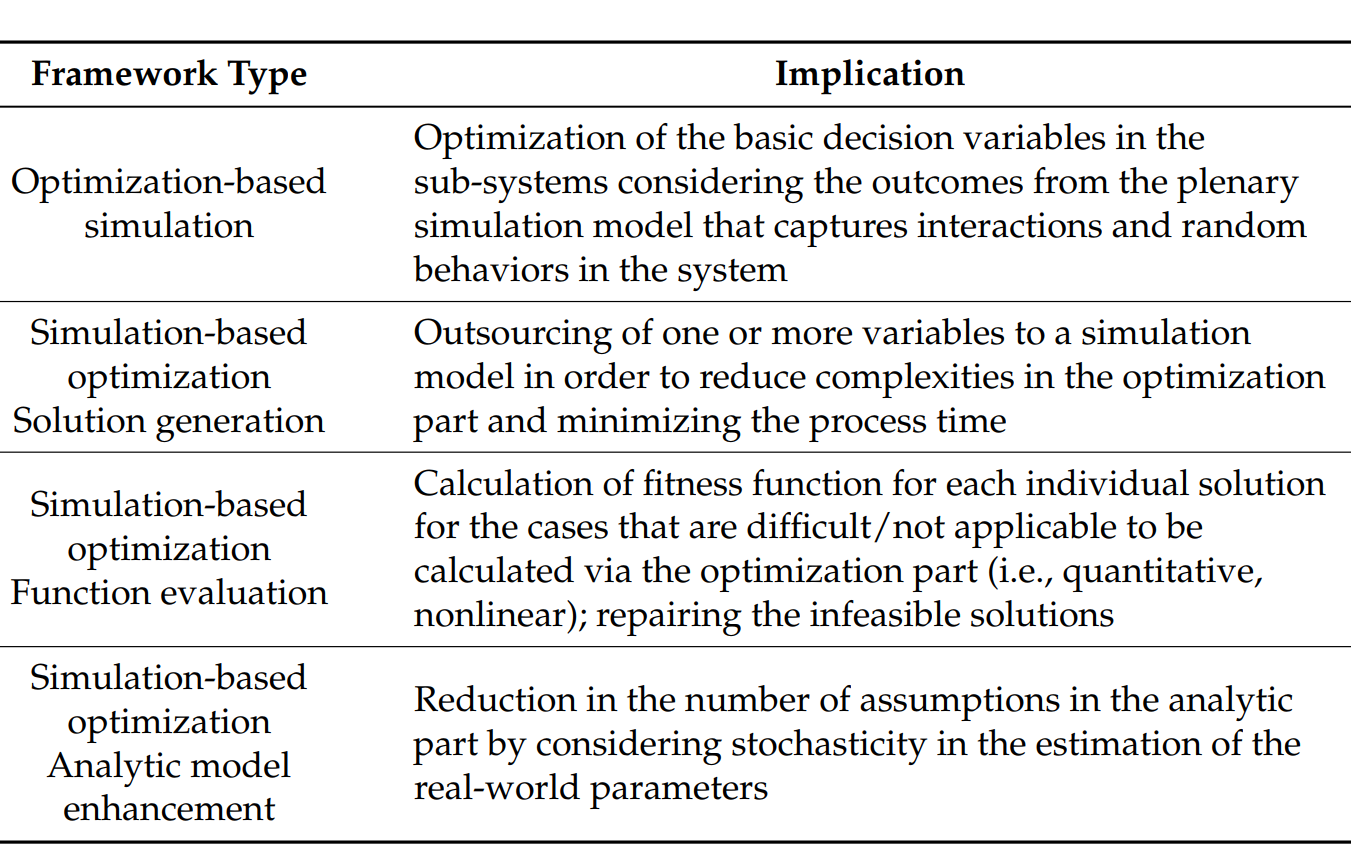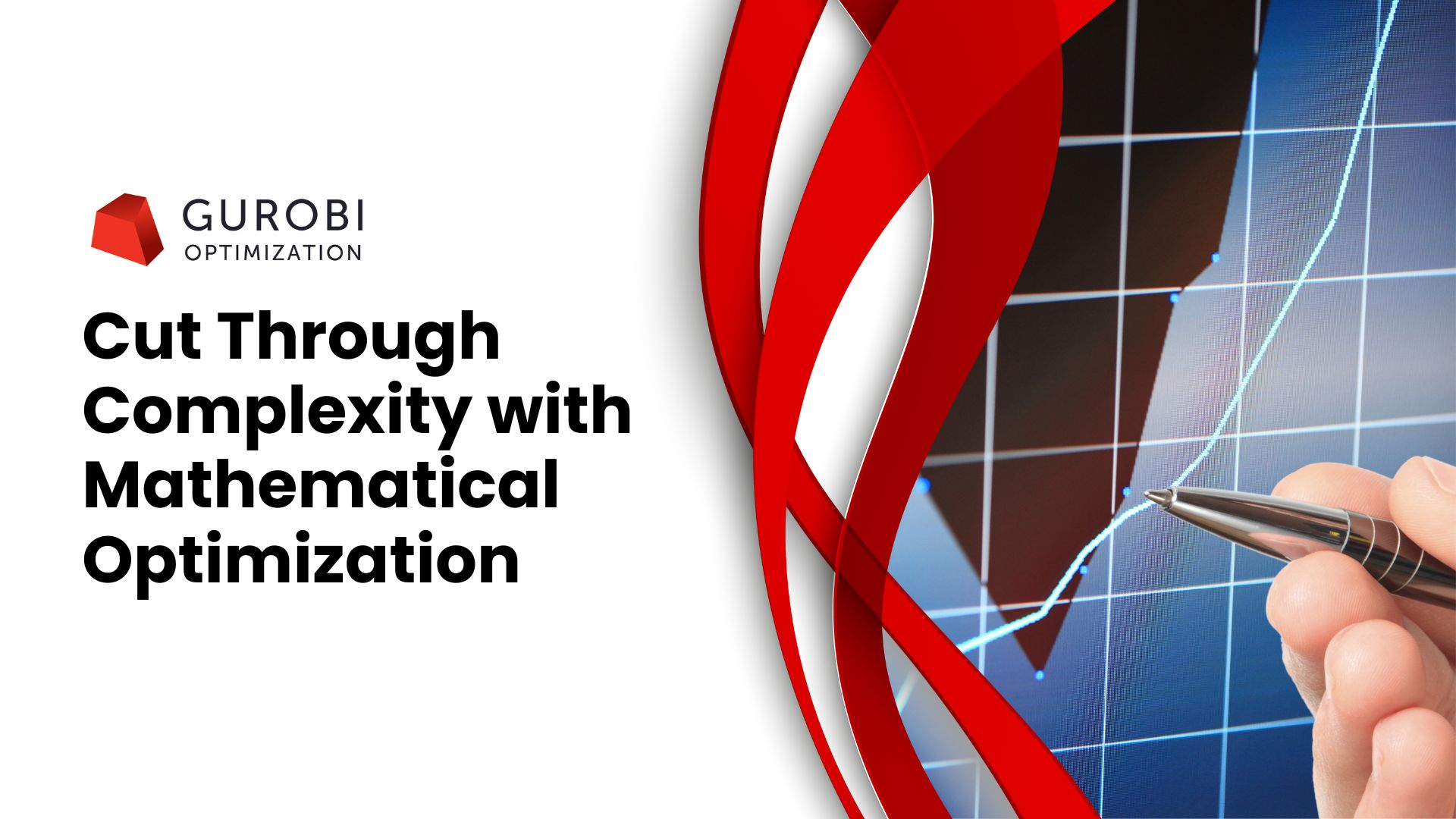Competition within the healthcare industry is on the rise. To stay in the market, healthcare organizations face the challenge of reducing operational costs while maintaining, if not improving, the quality of patient care and services provided. Supply chain management becomes a high management concern because it costs 40 percent of a typical hospital’s operating budget. Indeed, it is the second-largest expense for hospitals after labor. In what follows, first, we will briefly explain supply chain management in healthcare systems. Then, we will elaborate on the challenges and issues of healthcare supply chains. Next, we will talk about the essential use cases of supply chain management in healthcare systems. Finally, we will introduce the Operations Research tools widely used to solve healthcare supply chain problems.
1. Healthcare Supply Chain Management
The healthcare supply chain consists of several product types and the contribution of different stakeholders. Therefore, we can classify stakeholders in the healthcare supply chain into three main segments:
- Producers (e.g., medical and surgical devices, pharmaceuticals)
- Purchasers (e.g., wholesalers, distributors)
- Providers (e.g., hospitals, physicians, clinics, pharmacies, nursing homes)
The main goal of the healthcare supply chain is to provide products at the right time and to fulfill the requirements of healthcare service providers. The supply process of products in the healthcare service begins with the manufacturer and finishes with the healthcare provider’s patients. Based on its type, a product will be delivered by the manufacturer directly to the health care provider or channeled through a distributor. In the healthcare industry, the part of the supply chain related to pharmaceutical products is a crucial issue in light of guaranteeing a high quality of patient care and providing sufficient supplies of products for pharmacies. In addition, from the cost perspective, providing medication is about 25-30 percent of operational costs for hospitals. Thus, properly controlling this process is vital to ensure that both service and cost goals are met.
2. Healthcare Supply Chain Issues
From the interview and survey data, the top 10 challenges of the health pharmaceutical supply chains are identified and prioritized in the following order:
- Lack of coordination, fragmentation, and silos of a current system.
- Inventory management: including quantification, inventory levels, availability management, and stock counts.
- Absent demand information: demand information is often unknown or aggregated.
- Human resource dependency on expertise, training, and personnel capacity.
- Order management: including planning, ordering, and follow-up.
- Shortage avoidance: Shortages lead to (expensive) emergency orders, frequent replenishment, frequent ordering, and high inventory.
- Expiration.
- Warehouse management: including procedures and organization.
- Temperature control: including monitoring and failure in both transport and storage.
- Shipment visibility: including in-transit, delay, and arrival visibility.
Survey rating results can be found in Figure 1, which shows the distribution of ratings.

Lean supply chain management in healthcare focuses on the elimination of waste in hospitals. In a lean system, any activity that consumes resources but does not add value is waste. Value is defined as activities/products for which the customer is willing to pay. Table 1 shows the most critical wastes in healthcare systems.

Drug shortages can force patients to alternative treatments or result in the denial of treatment. Moreover, we should consider the impact on healthcare providers as time spent developing and executing contingency plans, which results in time away from providing care. Drug shortages have been increasing over the past decade. Figure 2 characterizes some of the impacts to pharmacists and patients in the event of drug shortages.

3. Use Cases of Healthcare Supply Chain Management
In this section, we introduce the most important use cases of supply chain management in healthcare systems.
3.1 Inventory Management of Pharmaceuticals
Inventory management of pharmaceuticals within the hospital pharmacy is a complex task. There may be as many as 2,000 drugs inventoried, many drugs are perishable (i.e., they have a short shelf-life), and demand for the drugs changes daily. Researchers have explored optimizing inventory systems in healthcare under various assumptions and supply chain structures such as conventional distribution systems and centralized stockless systems. The majority of studies focus on multiple-echelon supply chains. For example, inventory may be held in various locations throughout the supply chain, e.g., manufacturer, distributor, hospital’s central pharmacy, and PCU pharmacy.
The diversity of flows and the dispersal of logistics activities among the various departments and nursing units in a hospital tend to inflate the costs associated with these activities. The hospital is much more than simply a link in the supply chain, and its internal supply chain is highly complex. Hospitals are generally structured around clinical departments such as emergency, intensive care, oncology, the catheterization laboratory, operating rooms, etc., with inpatient beds organized in wards or nursing units averaging two dozen beds each. These departments and nursing units must have on-hand pharmaceutical products and medical supplies to support patient care. These products and supplies go through a series of steps before reaching the end-user (clinical staff or patient) for consumption. Medical supplies tend to come under the responsibility of the materials management department and most often must be processed by receiving and central stores before being delivered to end-users.
The hospital inventory system is complex. Demand originates at the patient level and is a defining factor in inventory optimization modeling. Several factors cause demand to be nonstationary. For example, patient condition dynamics change over time, affecting their drug needs. In addition, there is seasonality in demand (i.e., the number of patients in the hospital) due to events such as flu season. Dosing requirements vary due to dynamic patient characteristics such as age, weight, blood pressure, etc.
Several models have been developed to focus on healthcare inventory management problems considering social and economic importance, such as the continuous-time Markov chain model, demand forecasting algorithms, multi-echelon, multi-supplier inventory system, and joint economic lot-sizing model, and Holt’s model. Implementations of these models can manage healthcare inventory effectively and efficiently.
3.2 Vaccine Supply Chain
A vaccine supply chain has much in common with a commercial supply chain, but it has several specific characteristics such as perishability, the nonlinearity of health benefits of vaccination, non-profitability of vaccination programs for the government as a buyer, and the value of averting infection dynamics which differentiate them from commercial supply chains.
Due to the rising cost of vaccines and the greater storage capacity required at every level of the related cold chain, World Health Organization (WHO) focuses on lower stock levels, reduce wastage, accurately forecast vaccine requirements, and prevent equipment breakdowns. Accordingly, a vaccine supply chain is required to efficiently deliver vaccines from production to the people who need them. Figure 3 represents a schematic view of a vaccine supply chain.
The most important vaccine supply problems include:
- Vaccine sourcing (sourcing from different supply markets)
- Vaccine demand forecasting
- Vaccine shortage
- Vaccine production
- Vaccine cold chains

3.3 Blood Supply Chain
Blood is needed for several treatments, including organ transplants, cancer and anemia treatments, and major surgeries such as open-heart surgery. The demand for blood and blood products is satisfied by the donation of eligible individuals. Although 38% of the population in the U.S. is eligible for donation, only 3% of the population donate blood in a year. The combination of rising demand and shrinking donor pool forces blood donation organizations to be more efficient with their available donors.
A blood supply chain is different from a typical supply chain in three aspects: (1) The number of donations and blood supply changes over time. For example, there are seasonal shortages because of low blood collections during the winter and summer months. (2) The whole blood and blood products have short life spans. Therefore, there must be a certain amount of time between two consecutive donor donations to replace the donated blood. (3) To extract platelets, whole blood must be processed within six hours of donation.
Operations Research applications in blood supply chain management include:
- Demand forecasting
- Inventory planning
- Network design
- Vehicle routing
Most of the researchers focus on inventory management by considering the perishability of blood products. In the perishable inventory models, the following factors are considered:
- Average inventory level
- The average age of transfused blood
- The average number of shortages and wastage
The inventory models related to blood supply analyze the following aspects of the problem:
- Target Inventory Levels and Order Policies
- Issuing Policies (FIFO and LIFO)
- Inventory Allocation and Distribution Policies
Moreover, we can consider the following problems in blood supply chains:
- Matching supply with demand via donation tailoring
- Scheduling collection operations
4. Widely Used Operations Research Tools in Healthcare Supply Chain
Optimization and simulation approaches have been applied widely to improve the performance of healthcare supply chains. Simulation refers to imitating the operations and processes of a system in the real world, while modeling is the process of understanding and describing the behavior of a system. Optimization has provided managers with a powerful platform in the decision-making process. Moreover, the simplified representation of the supply chain generated by simulation can capture details and the system’s dynamic behavior. Simulation modeling can also assist users in performing what-if analysis in the most effective way. However, both techniques have their pros and cons. The diversity of supply chain-related analytical studies in the literature includes facility location problems, routing problems, inventory management problems, supplier selection, and pricing models. In addition, most of the past studies have developed mathematical models to solve supply chain problems.
The facility location, routing, and inventory decisions belong to different levels of decision-making in a supply chain. However, these decisions are interdependent. Therefore, the overall optimality might be unwarranted in the case of individual design and optimization. The integrated models have been devised to settle this issue. The location-inventory problem, the location-routing problem, and the inventory-routing problem are major integrated problems.
Different elements of a supply chain network are interdependent. Therefore, individual optimization of the variables in each component might result in the unwarranted overall optimality of the network. However, the inclusion of too many decision variables increases programming difficulties, which reduces the effectiveness of the mathematical model. On the other hand, simulation can provide a more detailed overview of the overall system in a user-friendly manner. However, it is not a proper tool for optimizing real-world and large-scale systems. These deficiencies necessitate the development of new approaches to overcome them.
Among the wide variety of Simulation-Optimization frameworks that have been developed under the large Simulation-Optimization family, the following frameworks are more distinct based on the technical features:
- Simulation-based optimization:This is the most popular framework, where solution generation, function evaluation, surrogate modeling, and mathematical model enhancement are among the major justifications for the hybridization of the simulation model into an optimization process. The solution evaluation is basically formed around the black box concept. It uses simulation models as a function evaluation tool for the cases in which measurement using analytical approaches is ineffective or feasible.
- Simulation optimization (Optimization of simulation): simulation optimization generally focuses on improving the search parameters/procedure in the simulation studies where various alternatives have to be simulated. These approaches include fractional factorial design in the design of experiments to avoid unnecessary runs and the evaluation of all of the possible alternatives. A most recent approach to this problem is simulation optimization, where an intelligent optimizer determines the proper number of runs and guides the simulation toward optimality.
- Optimization-based simulation: Optimization-based simulation is technically developed based on optimizing the tuning parameters for each agent in a supply chain network. Applying agent-based simulation modeling as a powerful tool for optimizing a supply chain network and running an external optimizer to optimize the controllable parameters for the operation of each agent is common practice in this field.
Table 2 reports the features of these frameworks in more detail. It should be noted that any conventional mathematical problem can be upgraded to a Simulation-Optimization framework to address real-world problems while applying fewer assumptions. By doing so, the simplification of the mathematical component can facilitate the use of commercial solvers like CPLEX and FICO Mosel, which are far less complicated for applications in multidiscipline studies.

5. Conclusion
In conclusion, optimization techniques have emerged as a vital tool in revolutionizing healthcare supply chains. The use cases discussed in this blog highlight the transformative impact optimization can have on improving efficiency, reducing costs, and enhancing patient care. By leveraging advanced analytics, machine learning, and automation, healthcare organizations can streamline their supply chain processes, optimize inventory management, and enhance decision-making. Whether it’s optimizing distribution routes, managing perishable items, or predicting demand, optimization techniques enable healthcare providers to navigate complex challenges and deliver better outcomes for patients. Embracing optimization in healthcare supply chains is not just a strategic imperative but a means to unlock significant value and pave the way for a more resilient and efficient healthcare ecosystem. With continued innovation and adoption, optimization will play a pivotal role in shaping the future of healthcare supply chains, driving sustainable growth, and ultimately improving patient well-being.
References
Privett, Natalie, and David Gonsalvez. “The top ten global health supply chain issues: perspectives from the field.” Operations Research for Health Care 3.4 (2014): 226-230.
Shamsi G, Nafiseh, and S. Ali Torabi. “Vaccine supply management.” Operations Research Applications in Health Care Management. Springer, Cham, 2018. 267-294.
Khorasani, Sasan T., Omid Maghazei, and Jennifer A. Cross. “A structured review of lean supply chain management in health care.” Proceedings of the International Annual Conference of the American Society for Engineering Management. Huntsville: ASEM, 2015.
Vila-Parrish, Anita R., and Julie Simmons Ivy. “Managing supply critical to patient care: an introduction to hospital inventory management for pharmaceuticals.” Handbook of Healthcare Operations Management. Springer, New York, NY, 2013. 447-463.
Pourhejazy, Pourya, and Oh Kyoung Kwon. “The new generation of operations research methods in supply chain optimization: A review.” Sustainability 8.10 (2016): 1033.











